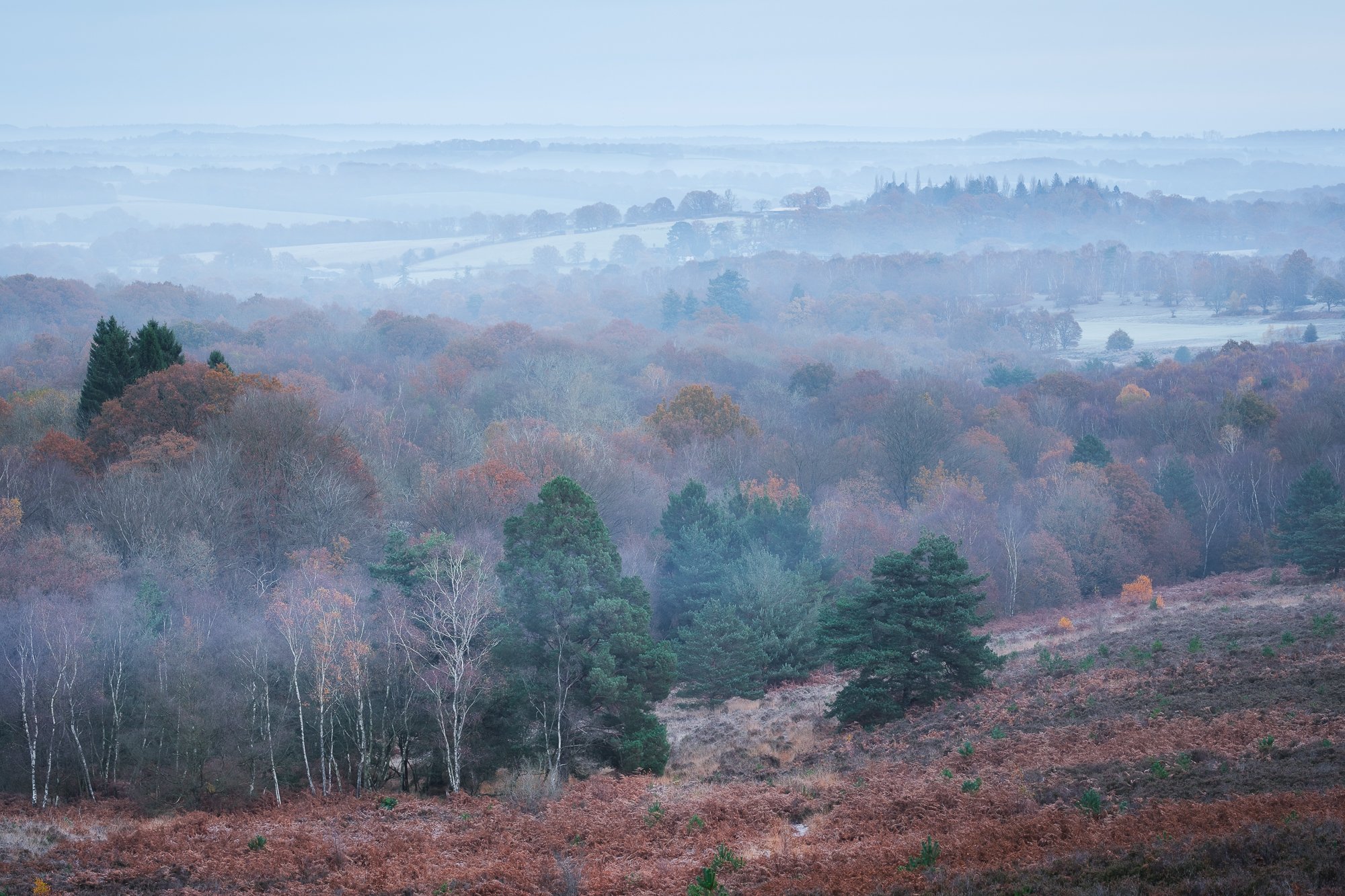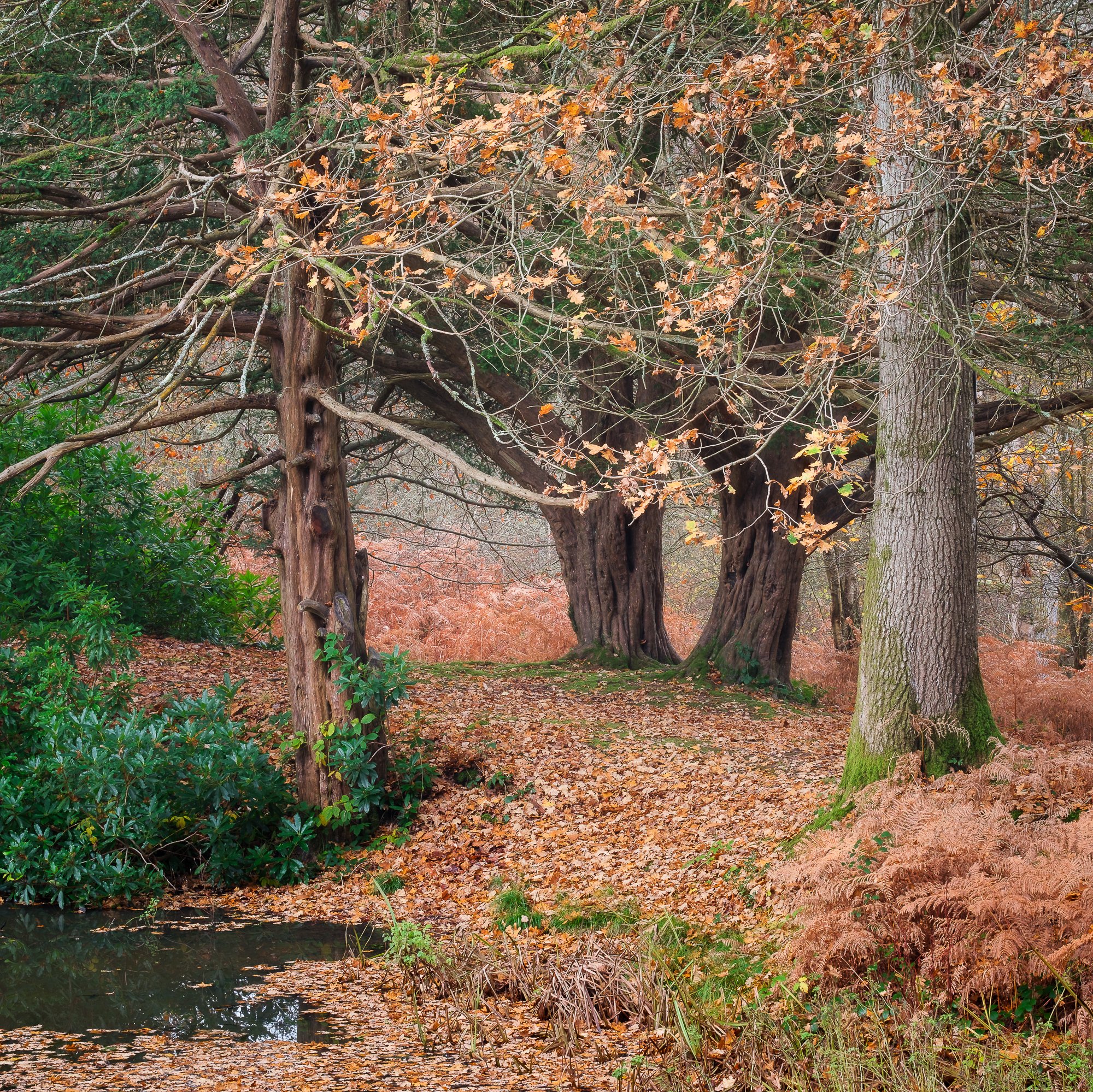Photographing autumn colour with the Fujifilm XF50-140mm lens
Late last year, toward the end of November (2023), I popped out to the forest to photograph what was left of the autumn colours. Only having a couple of hours to spare that morning and deciding to travel light….(ish). I took just my Fujifilm XT5 camera, the XF 50-140mm f2.8 lens and my tripod. Everything else was left in the car. Don’t worry, this blog isn’t a lens review, but more of an acknowledgement of the single camera and lens combo I used for all the photos during this little photography jaunt.
I arrived before sunrise and whenever I start from this area of the forest, I’ll typically head to my favourite viewpoint with a coffee to watch the sunrise and witness the landscape appear in front of me. It was a cloudy day, but for a short period before sunrise, there was a thin mist in the air, providing a touch of atmosphere across the landscape. So, taking advantage of the cooler, pre-sunrise tones, I took this photo of the undulating landscape below.
Fujifilm XT5 | XF50-140mm | 59mm | 1.3 Seconds | f/10 | ISO125
As the light levels increased and the mist withdrew into the distance, I photographed the same scene, but this time with the colours in the foreground looking warmer and more autumnal. Wanting to take in the wider landscape and being restricted to a minimum focal length of 50mm, I decided to take a stitched panoramic image. The advantage of doing it this way is that I can switch to a portrait orientation and zoom in further to bring the foreground even closer, making it appear larger in the picture. If I tried the same with a single shot on a wider lens, then I would have a huge foreground, tons of sky and a small slither of trees in the middle.
Fujifilm XT5 | XF50-140mm | 77mm | 0.6 Seconds | f/10 | ISO125
The other benefit of taking a stitched panoramic with 7 or 8 40-megapixel images is that you end up with a super-high resolution file. The panorama above is a whopping 157 megapixels and with so much resolution to play with, I was able to create another version of the image by just cropping it down to a 3:2 aspect ratio. The cropped photo below is still over 70 megapixels. Thats nearly double the resolution of my camera!
Fujifilm XT5 | XF50-140mm | 77mm | 0.6 Seconds | f/10 | ISO125
Before heading off into the woods and being drawn to how the brighter birch trees looked against the darker trees along the woodland’s edge, I took advantage of having the telephoto lens and zoomed right into 140mm and took some close-up photos of the woodland’s edge.
Fujifilm XT5 | XF50-140mm | 140mm | 2 Seconds | f/10 | ISO125
Fujifilm XT5 | XF50-140mm | 140mm | 0.5 Seconds | f/10 | ISO125
By this time, I had probably been in the same spot for around an hour, so, I decided to stretch my legs and head into the forest to have a little explore. Having just the 50-140mm lens with me, I focused on taking pictures of more intimate scenes, including just parts of the trees and cutting out any sky from the frame.
Fujifilm XT5 | XF50-140mm | 111mm | 0.6 Seconds | f/10 | ISO125
Fujifilm XT5 | XF50-140mm | 52mm | 0.8 Seconds | f/10 | ISO125
Fujifilm XT5 | XF50-140mm | 50mm | 1/5th Second | f/9 | ISO125
Fujifilm XT5 | XF50-140mm | 140mm | 1/8th Second | f/9 | ISO125
On the face of it, having one lens can appear restricting, but while out in the field with my camera, it didn’t feel like that at all. It felt a little liberating in fact. There was no decision needed as to what lens to use, no faffing with gear and certainly less weight. It helped me to focus my mind and see in a specific way, resulting in me coming away from the shoot with a few photos I’m pleased with.
I hope you enjoyed this bite sized on-location post. In a bid to get more of my photos up on my website, look out for more like this throughout 2024.
Until next time.
Trevor









